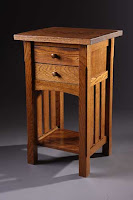
Did you know that you can have professional quality photos of your work for use on the internet, for product promotions and much more? If you have a digital camera these high quality photos are easy to obtain if you follow just a few simple guidelines when photographing your work. Of course if you can afford the time and the money, I highly recommend hiring a professional photographer. If not then here is a quick checklist you can follow to ensure you get the biggest impact from your digital photograph.
Check your resolution: Given the digital camera technology today and even if you own an older one you can take professional looking photos by first checking your resolution settings. When preparing to take your photos ensure that your resolution setting is set to its maximum setting. This setting can be found in couple of different formats. On my Olympus Stylus 760, 7.1 megapixel camera, the setting is Super High Quality (SHQ) which provides a resolution of 3072 x 2304. This will produce a large photo that is easy to edit and downsize, which will be necessary if you plan on using the photo on the internet. This also produces a very large image file, generally in the neighborhood of 3-4 Mb.
So why do we need such a large resolution and image file? Because when the image is resized and optimized for the web, the image will be crystal clear and sharp with no graining or blur.
Check your background: It amazes me how many photos I have seen of awesome furniture but they are taken in the driveway in front of the garage door. You may have a beautiful garage door but it will hardly suffice as an adequate background for your masterpiece. So what is the alternative you ask? Most craftsmen will have an old tarp, drop-cloth or sheet lying around that will work wonderfully in a pinch. If you have a few dollars lying around you could always go out and purchase one neutral colored background to use just for your projects. Since, more than likely, you will be taking a photo of something sitting on the floor you will want to make sure that the floor is going to work with your photos as well. If not just set your piece on the tarp and then raise the rest of the tarp up behind the piece. Try to keep some distance between your piece and the cloth to help create depth within the image.
In the following photo I have just done some quick Photoshop editing to remove the background and simplify to accentuate the wine butler piece. As you can see in the original image there is a lot going on with the background , in the second image I removed the upper and lower background and just inserted a textured background and cropped the image to bring the butler to the forefront. In the last image, I really eliminated all the background
elements and used a clouded background the really only showoff the piece. This way the viewers eye is completely on the piece because that is all that is there.
Another idea is to find a wall that has an interesting texture and neutral color that will not detract from the object of your photo. I happen to have a stucco home with a cream color to it. It works great as a background and provides a nice texture.
Check your lighting: This is actually easier than you would think and you don’t need to have a fancy light meter to check the light levels either. I know as a woodworker myself; I have numerous task lights of varying wattage and light output. I have experimented with them and found a couple that work great for my purposes. Don’t use strong direct light like a bright 500 watt halogen, soft subtle light is always best and will create gentle shadows that will add depth to your image. Try bouncing the light off the ceiling or wall or using a couple lights to achieve just the right effect. One great source of lighting is the sun itself. Take your piece outside and you will get the most natural light available to man at no cost to you. Adjust the angles to get the best reduction of shadow and shoot away. Some the best photos of furniture are shot with natural sunlight.
Try to avoid using your camera’s built in flash. This light can sometimes create washed out images with very strong shadows in the wrong places. The flash also will produce light reflections or bright spots within the image, especially if you have a glossy finish.
Take many photos: When photographing your craftsmanship you will want to take a number of photos from varying angles and heights to make sure that you get at least a few quality photos for your use. I will generally take a few as 15 to 20 photos using different camera settings to make sure I get the right color and hue of the project. I was amazed the first time I did this to see how many different color shades my piece of furniture was. By changing things like the white balance and ISO settings on the camera I was able to obtain photos of the same piece that didn’t look like the same piece if you know what I mean. Of course the goal here is to capture your project in as realistic a color and hue as possible.
Also be sure to get up close and personal with your piece. If your camera has a Macro setting, turn it on and get right up close to take photos of special details such as joints, carving accents, butterflies etc. If you are posting your photos at The Craftsman’s Woodshop these types of images really make the photo collection pop out and give the viewer much more of an idea of the quality of your piece.
Use photo editing software: If you plan on using your images on your own website you will have to reduce their size in order for them to be useable. This is critical for a couple of reasons. First, the original file size using the high resolution make for an extremely large file; one that is too large for internet usage. It would take someone with dial up about a day to download a 3 Mb file. Secondly, most images should not be any larger than 640x480. Any larger and the image may not fit on some computer monitors. By using image editing software such as Photoshop or even the software that came with your printer you can reduce this size down and save both screen real estate and storage size. When I save images for The Craftsman’s Woodshop, I reduce them all down to be no larger than 500 pixels in both directions and then save them as a medium grade jpeg file. Jpeg files use special compression settings that really reduce the storage size of your image and they will be optimized for the purpose of internet viewing.
Well there you have it, it’s at least a good start to providing some simple things that can be done to help you take awesome photos of your even more awesome handmade projects. If you really get into it, taking these photos can be almost as much fun as making the piece itself. I know when I have captured my projects in a great looking photo I can hardly contain my excitement.
Author, Joe Truehart
The Craftsman’s Woodshop








